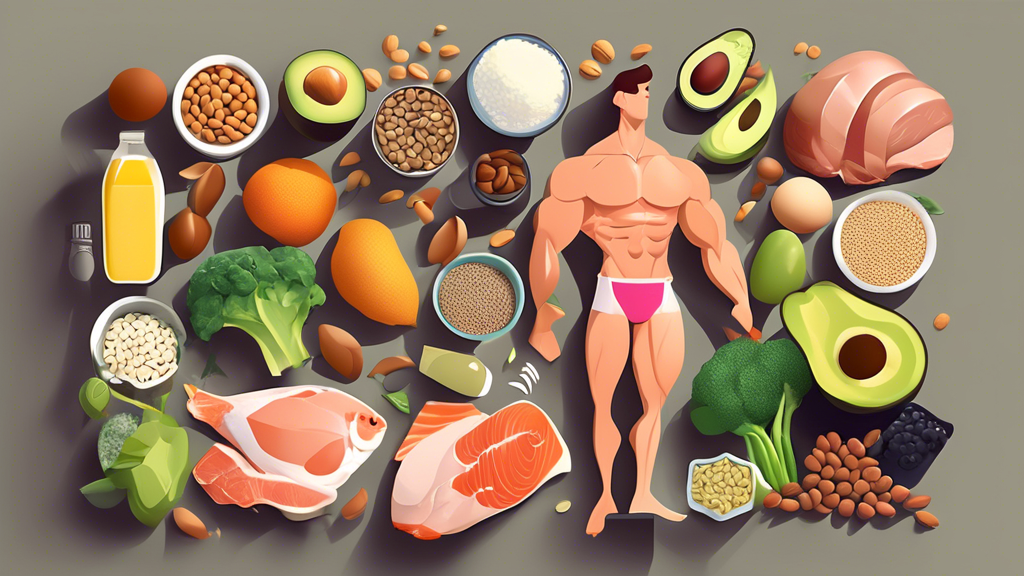Building strong and sculpted legs and glutes requires a well-rounded approach that combines effective workouts and smart nutritional strategies. To develop these muscle groups, include high-impact exercises like squats, deadlifts, and lunges in your routine. These foundational moves generate significant strength and muscular growth. Additionally, targeted movements such as hip thrusts, step-ups, and glute bridges will hone specific muscles, leading to a more defined lower body. For optimal results, blending cardio with strength training is essential, as it helps in burning fat while building lean muscle mass.
Proper nutrition is a critical component of muscle growth. Focus on a diet rich in essential macronutrients—protein, carbohydrates, and fats—to support your training regimen. Pre- and post-workout nutrition can significantly influence your performance and recovery. Consuming the right foods before a workout prepares your muscles for exertion, while post-workout meals aid in muscle repair and growth. Supplements like protein powders and amino acids can further bolster recovery and muscle development, helping you achieve your fitness goals more efficiently. By integrating these exercise and nutritional strategies, you can reach new heights in your leg and glute muscle-building journey.
Leg And Glute Muscle Building
Effective Exercises for Leg and Glute Muscle Building
High-Impact Workouts: Squats, Deadlifts, Lunges
To effectively build leg and glute muscles, incorporating high-impact workouts such as squats, deadlifts, and lunges is essential. Squats are a fundamental exercise, targeting the quadriceps, hamstrings, and glutes. Variations like goblet squats or sumo squats can add diversity to your routine. Deadlifts, particularly Romanian or conventional, are excellent for focusing on the posterior chain, involving the hamstrings, glutes, and lower back. Lunges, whether performed as walking lunges, reverse lunges, or Bulgarian split squats, provide an excellent workout for both the glutes and the stabilizing muscles of the legs.
Targeted Movements: Hip Thrusts, Step-Ups, Glute Bridges
While compound movements are critical for overall development, targeted exercises like hip thrusts, step-ups, and glute bridges allow for specific focus on the glutes and leg muscles. Hip thrusts, which can be executed using a barbell, resistance bands, or even bodyweight, are particularly effective for isolating the glutes. Step-ups offer a functional movement pattern and can be adjusted in intensity through the use of weights or varying the height of the step. Glute bridges, another staple, are effective for engaging the entire glute region and can be performed in numerous variations to keep the muscles challenged.
Combining Cardio with Strength Training for Maximum Gains
To maximize muscle gains, combine cardiovascular exercises with strength training. Low-intensity steady-state cardio like walking, cycling, or swimming can aid in muscle recovery and endurance without excessively taxing the muscles. High-intensity interval training (HIIT) offers a powerful combination of strength and cardio, promoting muscle growth while improving cardiovascular health. Integrating these workouts ensures a balanced approach, supporting overall muscle development and strength.

Nutritional Strategies for Muscle Growth
Essential Macronutrients: Protein, Carbs, and Fats
Building leg and glute muscles requires an appropriate intake of macronutrients. Adequate consumption of protein, carbohydrates, and fats is vital to support muscle growth and repair. Protein is particularly important as it provides the amino acids necessary for muscle synthesis. Aim for high-quality protein sources such as lean meats, fish, eggs, and plant-based proteins like beans and lentils.
Carbohydrates are also essential, providing the energy needed for intense workouts. Focus on complex carbs like whole grains, fruits, and vegetables to maintain sustained energy levels. Fats, while often misunderstood, play a critical role in hormone production and overall health. Incorporate healthy fats from avocados, nuts, seeds, and olive oil into your diet.
Pre- and Post-Workout Nutrition Tips
Fueling your body before and after workouts can significantly impact muscle growth and recovery. Prior to exercising, consume a balanced meal that includes protein and complex carbohydrates. This combination will give you the necessary energy and amino acids for your session. Ideal pre-workout foods include a chicken breast with brown rice, or a smoothie made with Greek yogurt, berries, and spinach.
Post-workout nutrition focuses on replenishing glycogen stores and repairing muscle tissue. Consuming a combination of protein and carbohydrates within 30 minutes of completing your workout can boost recovery processes. A protein shake with a banana, or a meal like grilled salmon with sweet potatoes, is an excellent choice.
Supplements to Enhance Muscle Recovery and Development
While whole foods should be the primary source of nutrients, supplements can aid in muscle recovery and growth. Protein powder, such as whey or plant-based options, provides a convenient way to increase protein intake. Amino acids, specifically branched-chain amino acids (BCAAs), can support muscle repair and reduce exercise-induced soreness.
Creatine is another well-researched supplement that can enhance strength and muscle gains. It aids in the production of ATP, the primary energy carrier in cells, which can improve performance during high-intensity activities. Additionally, Omega-3 fatty acids, found in fish oil supplements, possess anti-inflammatory properties that can promote faster recovery.
Finally, consider a daily multivitamin to fill any nutritional gaps in your diet. Ensuring your body has all the essential vitamins and minerals can optimize muscle-building efforts and overall health.
In conclusion, building leg and glute muscles requires a comprehensive approach that integrates both effective exercises and proper nutrition. High-impact workouts like squats, deadlifts, and lunges form the foundation for muscle growth, while targeted movements such as hip thrusts, step-ups, and glute bridges focus on specific muscle activation. Combining these strength routines with cardio maximizes overall gains and enhances endurance. Nutritional strategies play a crucial role in this muscle-building journey. Prioritizing essential macronutrients, including protein, carbohydrates, and fats, is vital. Additionally, paying attention to pre- and post-workout nutrition can significantly impact muscle repair and growth. Supplements may also aid in recovery and further development. By applying these principles consistently, individuals can effectively enhance their leg and glute strength and achieve their fitness goals.